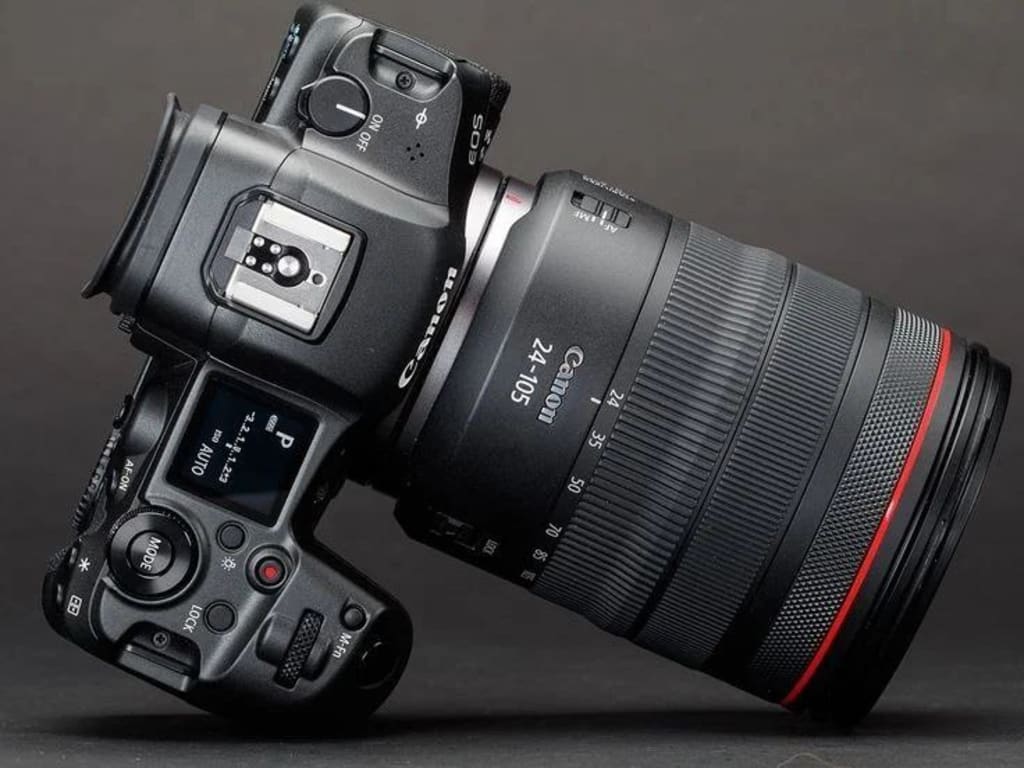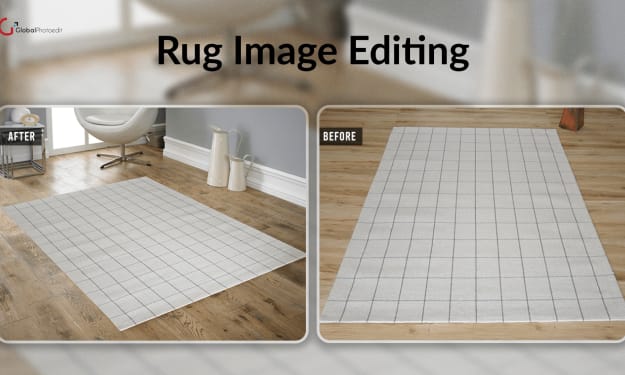Get Picture-Perfect Shots with These Beginner Camera Tips
Read this article to learn more...

Are you just starting out in photography and looking for the best camera tips for beginners? With so many options, it can be overwhelming to know where to start. But don't worry - with these beginner camera tips, you'll be able to get picture-perfect shots in no time! From understanding your camera settings to learning about lighting, composition, and more, this blog post will help you get started and take your photography skills to the next level.
1).Understanding the Basics of Your Camera
For beginners diving into the world of photography, understanding the basics of your camera is the first step towards capturing stunning images. Whether you're using a smartphone, a point-and-shoot camera, or even a high-end DSLR like the best Canon EOS R5 https://amzn.to/3rvgSVE for beginners, knowing your equipment inside and out is crucial.
Start by familiarizing yourself with the various buttons, dials, and menus on your camera. Read the user manual or watch tutorials to learn about the different modes and settings available to you. Experiment with shooting in automatic mode to get a feel for how the camera adjusts settings based on the scene. As you gain confidence, begin exploring semi-automatic or manual modes to have more control over your shots.
Additionally, understanding camera terminology such as aperture, shutter speed, ISO, and focal length will greatly enhance your photography skills. These fundamental concepts affect the exposure, depth of field, and overall look of your images.
Remember to practice regularly, as this will help solidify your understanding of your camera's capabilities. Take your camera with you everywhere and experiment with different settings and shooting techniques. The more you familiarize yourself with your camera, the more intuitive and natural the process of capturing stunning shots will become.
2).Choosing the Right Camera Settings
When it comes to photography, choosing the right camera settings is crucial to achieving the best results. This is especially important for beginners who may still be getting familiar with their cameras. One camera that is highly recommended for beginners is the Canon EOS R5.
First and foremost, it is important to understand the different camera modes and settings available. The Canon EOS R5 offers various shooting modes such as manual, aperture priority, shutter priority, and program mode. Experimenting with these modes will help you understand how they affect the exposure and depth of field in your photos.
Additionally, familiarize yourself with the different shooting settings, including ISO, shutter speed, and aperture. ISO determines the camera's sensitivity to light, while shutter speed controls the duration of time the camera's sensor is exposed to light. Aperture, on the other hand, determines the amount of light that enters the camera and affects the depth of field.
As a beginner, it is recommended to start with the aperture priority mode. This allows you to control the depth of field while the camera automatically adjusts the shutter speed and ISO. This mode is perfect for portraits or landscape photography.
Remember to also consider your surroundings and adjust the white balance accordingly. The Canon EOS R5 offers various white balance presets such as daylight, cloudy, and tungsten. Choosing the appropriate white balance setting will ensure accurate color representation in your photos.
By familiarizing yourself with the different camera modes and settings on the Canon EOS R5, you'll be able to capture stunning photos and unleash your creativity as a beginner photographer. Don't be afraid to experiment and practice with different settings to find what works best for you and your style of photography.
3).Mastering Lighting for Better Photos
Lighting is one of the most crucial elements in photography, and mastering it can significantly enhance the quality of your photos. Whether you are shooting indoors or outdoors, understanding how light behaves and learning to control it is essential for capturing picture-perfect shots.
When it comes to lighting, natural light is often the best choice for beginners. Start by observing how light changes throughout the day and how it affects the objects you are photographing. The golden hour, which is the hour after sunrise and before sunset, offers soft, warm light that can create stunning photos.
If you're shooting indoors, experiment with different light sources. Natural window light can create beautiful soft lighting, while artificial lighting, such as lamps or studio lights, can be used to create dramatic effects.
Understanding exposure is also crucial for mastering lighting. Adjusting the exposure settings on your camera can help you achieve the desired brightness or darkness in your photos. Don't be afraid to experiment with different exposure settings to find the perfect balance.
Additionally, using reflectors or diffusers can help control the intensity and direction of light. Reflectors bounce light back onto your subject, while diffusers soften harsh light, creating a more flattering and natural look.
Finally, don't forget about post-processing. Editing your photos can further enhance the lighting and make your images stand out. Invest in editing software and learn the basics of adjusting exposure, contrast, and white balance to bring out the best in your photos.
By understanding and mastering lighting techniques, you can take your photography skills to the next level and capture breathtaking photos with your Canon EOS R5 or any other camera. So, get out there, experiment with different lighting scenarios, and let your creativity shine through your photos!
4).Using Composition Techniques to Improve Your Shots
When it comes to photography, composition plays a crucial role in creating visually appealing and engaging images. Even if you have the best Canon EOS R5 for beginners, understanding composition techniques can take your photos to the next level.
One important rule to keep in mind is the rule of thirds. Imagine dividing your frame into nine equal parts by drawing two horizontal and two vertical lines. The points where these lines intersect are known as the "points of interest." Placing your subject along these points, instead of in the center, can create a more dynamic and visually interesting composition.
Another technique to consider is leading lines. These are lines within the frame that lead the viewer's eyes towards the subject. They can be actual lines, such as a road or a path, or implied lines, such as the direction a person is looking. Experiment with different angles and perspectives to make the leading lines more impactful.
Don't forget about the power of negative space. Negative space refers to the empty areas around your subject. It can help draw attention to the subject and create a sense of balance and simplicity in the image. Pay attention to the background and remove any distractions that may take away from your subject.
Lastly, try different perspectives and angles. Get down low or climb up high to capture a unique viewpoint. Don't be afraid to experiment and break the traditional rules of composition. Sometimes the most interesting and captivating shots are the ones that challenge the norm.
By implementing these composition techniques, you can elevate your beginner photography skills and capture images that are visually appealing and memorable. Remember, the best camera is the one that you have, and with a little practice and creativity, you can create stunning photos that truly stand out.
5).Tips for Capturing Great Action Shots
Capturing action shots can be challenging, but it’s not impossible. With the right techniques and a bit of practice, you can get some amazing shots of moving subjects.
First, choose the right camera. The Canon EOS R5 is a great option for beginners, thanks to its fast autofocus system and high-speed burst shooting mode.
When shooting action, make sure you select a fast shutter speed. This will freeze the motion and prevent blur. If you’re shooting in low light, increase your ISO or use a wider aperture to let more light in.
When framing your shot, try to anticipate where your subject will be and focus on that spot. Continuous autofocus mode can help you keep your subject in focus as they move.
Another technique to try is panning. This involves following your subject with your camera and using a slower shutter speed to create motion blur in the background while keeping your subject sharp.
Finally, don’t be afraid to experiment with different angles and perspectives. Try shooting from low to the ground or from above for a unique perspective on the action.
Remember, practice makes perfect. Keep trying and soon you’ll be capturing amazing action shots like a pro.
6).The Importance of Editing and Post-Processing Your Photos
Editing and post-processing are essential steps in the photography process that can take your images to the next level. While capturing a great shot is important, editing allows you to enhance and polish your photos to create a final masterpiece.
One of the best tools for beginners is the Canon EOS R5, a powerful camera that provides excellent image quality. However, even the best camera needs some editing to truly bring out the best in your photos.
Editing allows you to correct any exposure or color issues, adjust the composition, and bring out the details in your images. It also gives you the opportunity to add your own personal touch and creative flair to your photos.
With the Canon EOS R5, you have access to a wide range of editing options and settings that can help you achieve the desired look for your photos. Whether you want to enhance the colors, sharpen the details, or create a vintage effect, the editing process gives you complete control over the final outcome.
Furthermore, post-processing your photos can help you eliminate any distractions or imperfections that may have been present in the original shot. Whether it's removing a stray object or retouching skin blemishes, post-processing allows you to perfect your images and make them truly stunning.
If yo want to get the best camera click BUY NOW. Learn my #1 way to master the camera and click here now





Comments
There are no comments for this story
Be the first to respond and start the conversation.